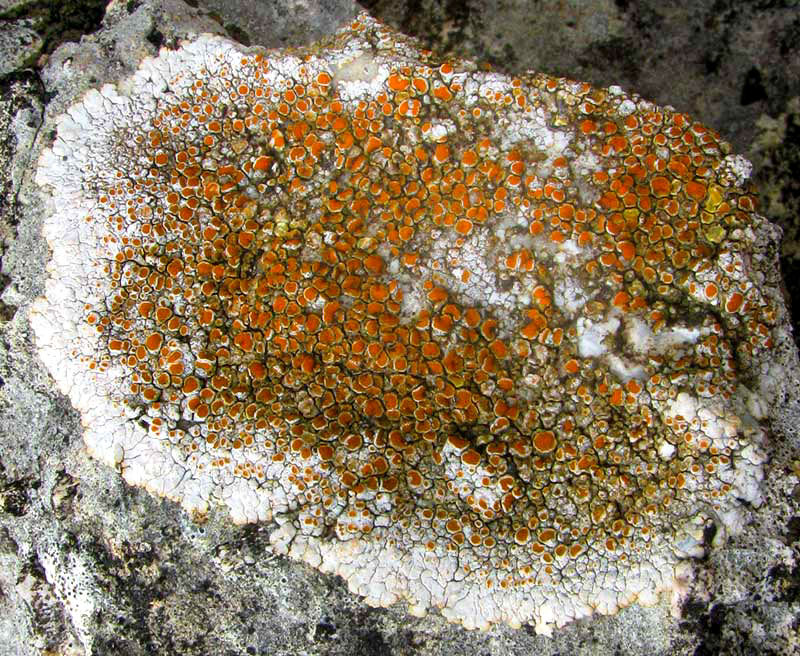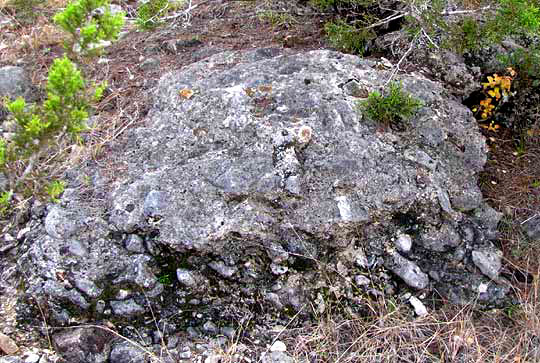Excerpts from Jim Conrad's
Naturalist Newsletter

from the February 3, 2013 Newsletter issued from the valley of the Dry Frio River in northern Uvalde County, southwestern Texas, on the southern border of the Edwards Plateau; elevation ~1750m (~5750 ft); N29.62°, W99.86°; USA
FIREDOT LICHEN
The first lichen to catch my attention was by no means our most commonly encountered saxicolous species, but it's certainly one of the prettiest, at least up close. First take a look at its habitat, on a limestone boulder partly shaded by Ashe Junipers on a slope next to the river, shown below:

In that picture the boulder is blotchy with many kinds of lichens, but the one we're focusing on is the round one with a white fringe and dark center at the top, right of the squarish depression near the rock's center. At the top of this page you can see a close-up of the lichen, a saucer-sized, crustose one. A close-up of the lichen's tiny, orange-centered, spore-producing apothecia is shown below:

Mainly using the field marks of its being a crustose lichen occurring on limestone, of bearing small, orange apothecia, and of occurring in this part of the world, the excellent "Dynamic Key" at http://lichenportal.org fairly easily enabled me to "key out" this lichen as CALOPLACA GALACTOPHYLLA*, variously known as Firedot Lichen, Jewel Lichen, or just Orange Lichen. There's not much information available for it, but it seems to occur mostly in North America's semiarid central region, the prairie, and farther south into arid northern Mexico.
Hardly anything is stated about its ecology, though that may be because it's so obvious that the lichen just lives on that rock, and it's known that very, very slowly lichens help break down rock into nutrients the whole ecosystem eventually benefits from.
The main "value" of this pretty and patient little being is surely that it exists, adding grace and charm to the lives of any sentient, sense-of-esthetics-endowed, spiritual beings willing to notice it.